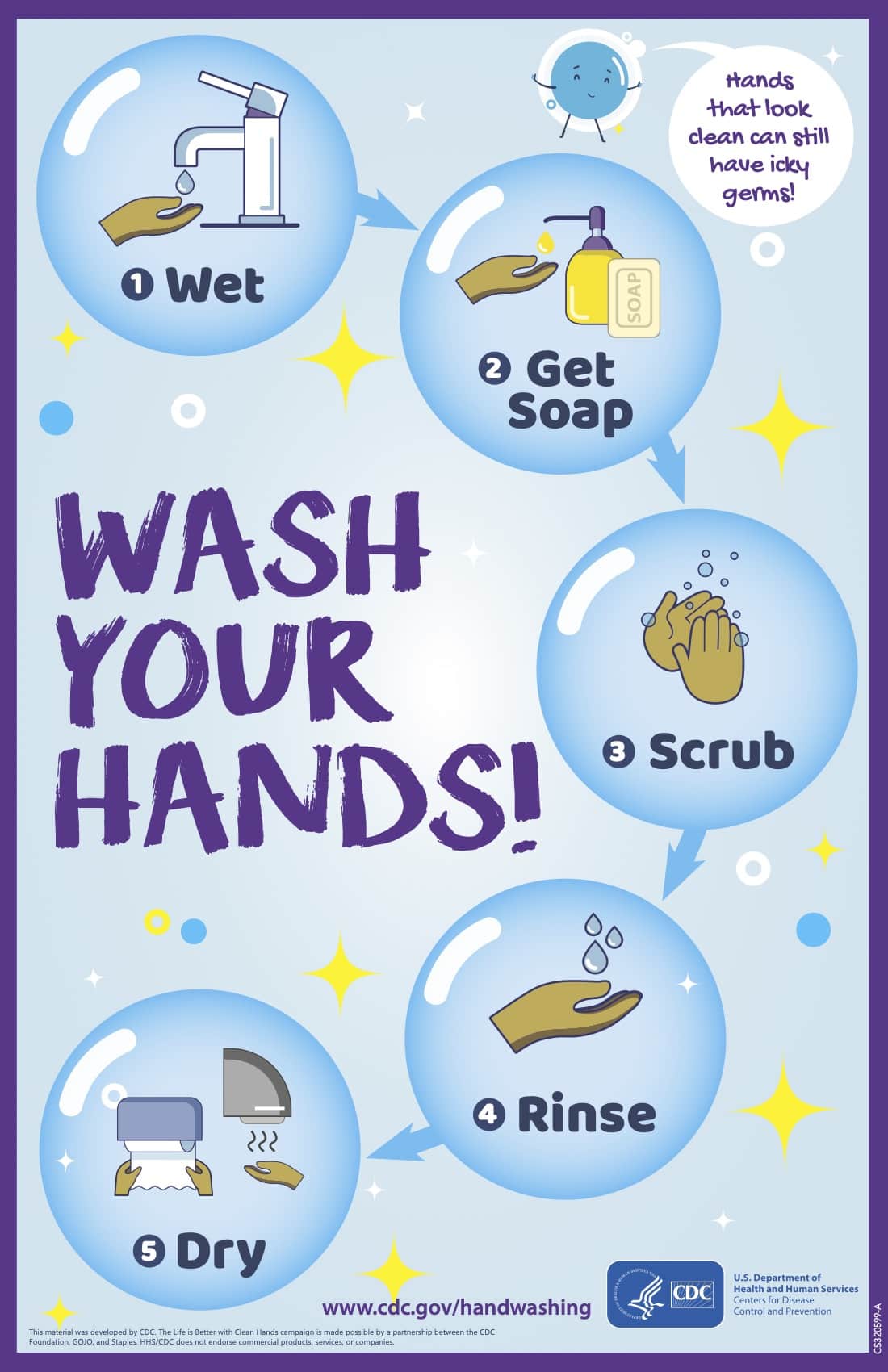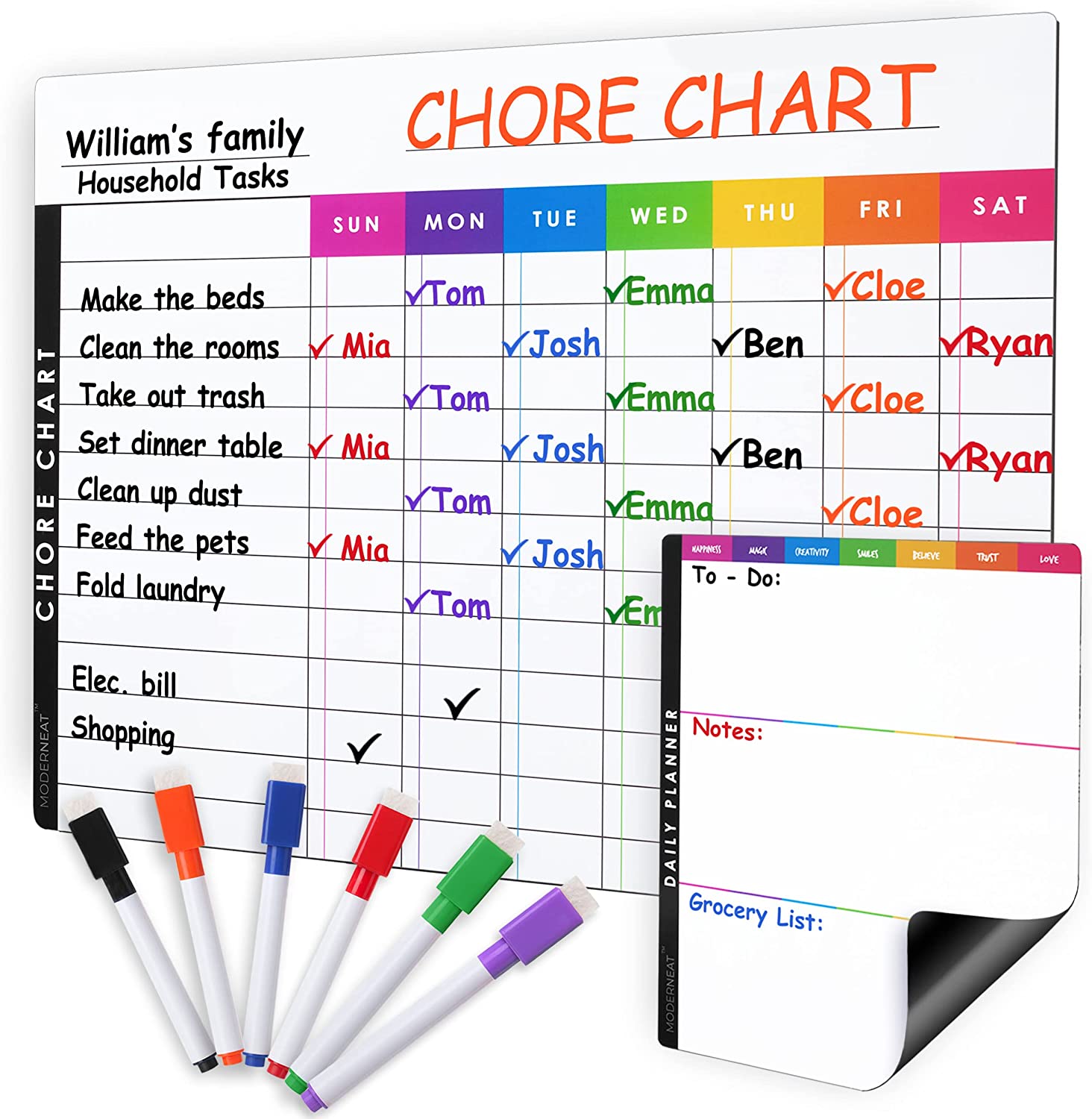Visuals are something we often take for granted. As adults, they are something we use every day. From street signs to cookbook recipes to furniture assembly instructions, we rely on visuals to help us complete all sorts of tasks. And just like adults, children benefit significantly from using visual supports daily.
Walk into any preschool through high school classroom, and there are visual supports everywhere, from behavioral expectations and schedules to maps and assignments. Just as they are utilized in educational environments, visuals can be a great way to support your children at home. We’ve compiled ways to use visual supports in your home to help your child learn, understand expectations, and develop routines.
Visual Supports You Can Use at Home
Here are 10 visual supports you can use around your home to help your child learn.
1. Morning Routine Visual Schedule

We all know that getting kids ready for the day can feel like pulling teeth. One way to help your sanity as a parent, and foster independence in your child, is to have a morning routine visual schedule or checklist. From brushing their teeth to getting dressed to eating breakfast, outlining the morning can help streamline your time and allow your child to get ready for their day without requiring prompts and reminders. You can find ready-made printable routine schedules online to use at home, made by educators.
2. Visual Timers

Whenever you give your child a task to complete with a time or length specification, you can use a visual timer so they can see how much or how little time they have left. For example, if your second-grader’s homework is to read for 10 minutes every night, set a visual timer and have them sit down with a book.
3. Place Setting Visual

We all love for kids to help set the table. It’s a responsibility many young children can take on, and it helps make parents’ lives easier. But many kids forget which side to put the fork on and which to put the spoon on. So, post a visual of what a place setting looks like!
4. Mealtime Behavior Expectations

I often repeat myself during mealtimes, saying things like “Sit on your bottom!” and “Lean over your plate.” Rather than engaging in conversation, I often feel like I’m nagging. So, I put up pictures by our kitchen table that show my kiddos what behavior is expected at mealtime. If I need to, I point to one of the pictures to remind my child how we behave at meals. For my youngest, I often utilize this book, another form of visual, to show mealtime expectations.
5. Steps to Wash Hands

This past winter was a doozy regarding colds, viruses, pink eye, etc. Washing hands is one of the easiest ways that children can minimize their exposure to some of those nasty germs. Posting visuals of the steps to proper hand washing is a great way to remind your child what they need to do to keep their hands clean. The CDC has great free printable visuals available on its website here and in multiple languages.
6. Monthly Calendars

A monthly calendar posted in the playroom or on your child’s bedroom wall can help them visualize many things, like how many days until their birthday, how many days until grandma and grandpa visit, etc. Marking the day of the big “event” and allowing your child to cross off each day as it passes allows your child to process the concept of time, especially when anticipating something exciting.
7. Height Charts

Many of us do this with our kids, but we don’t even process that it is an incredibly useful visual. For example, every six months, we mark on my daughter’s bedroom wall how tall she is and the date the measurement is taken. This serves as a memento for parents of their growing child, allows your child to see how much they are growing, and opens a discussion of concepts of numbers and measurement. You can buy height charts or mark them on the wall in pencil as I do.
8. Chore Charts

Having your child take on age-appropriate responsibilities to contribute to your family and potentially earn an allowance or other privileges is important. A visual checklist of the chores you assign to each child helps them to be aware of what they need to do and feel a sense of accomplishment as they check off a task upon completion. You can buy one that works best for your child or make your own.
9. Weather Visual Chart

A great way to teach your child about the weather and help them determine what clothes they should wear for the day is to use a weather chart. Have your child peek out the front door or window and decide whether it’s “hot” or “cold,” “sunny” or “cloudy,” etc. Some charts include identifying the season. Again, some are available for purchase, pre-made and printable (here), or you can have your child draw icons for each type of weather and use those.
10. Safety Symbols

When you have young children, there’s a balance between allowing them to explore and showing them what are safe and not safe decisions. While most parts of my house are open for exploration, I like to put a “stop sign” visual on my house’s front and back doors. I use this as a cue to show my young children that if they want to go outside, they need an adult. Thus, the stop sign signals them to grab an adult.
Visuals are a great, simple way to help facilitate learning, engagement and communicate expectations with your child. Children learn best when information is communicated in multiple ways, and visuals are a modality that I use regularly.1































